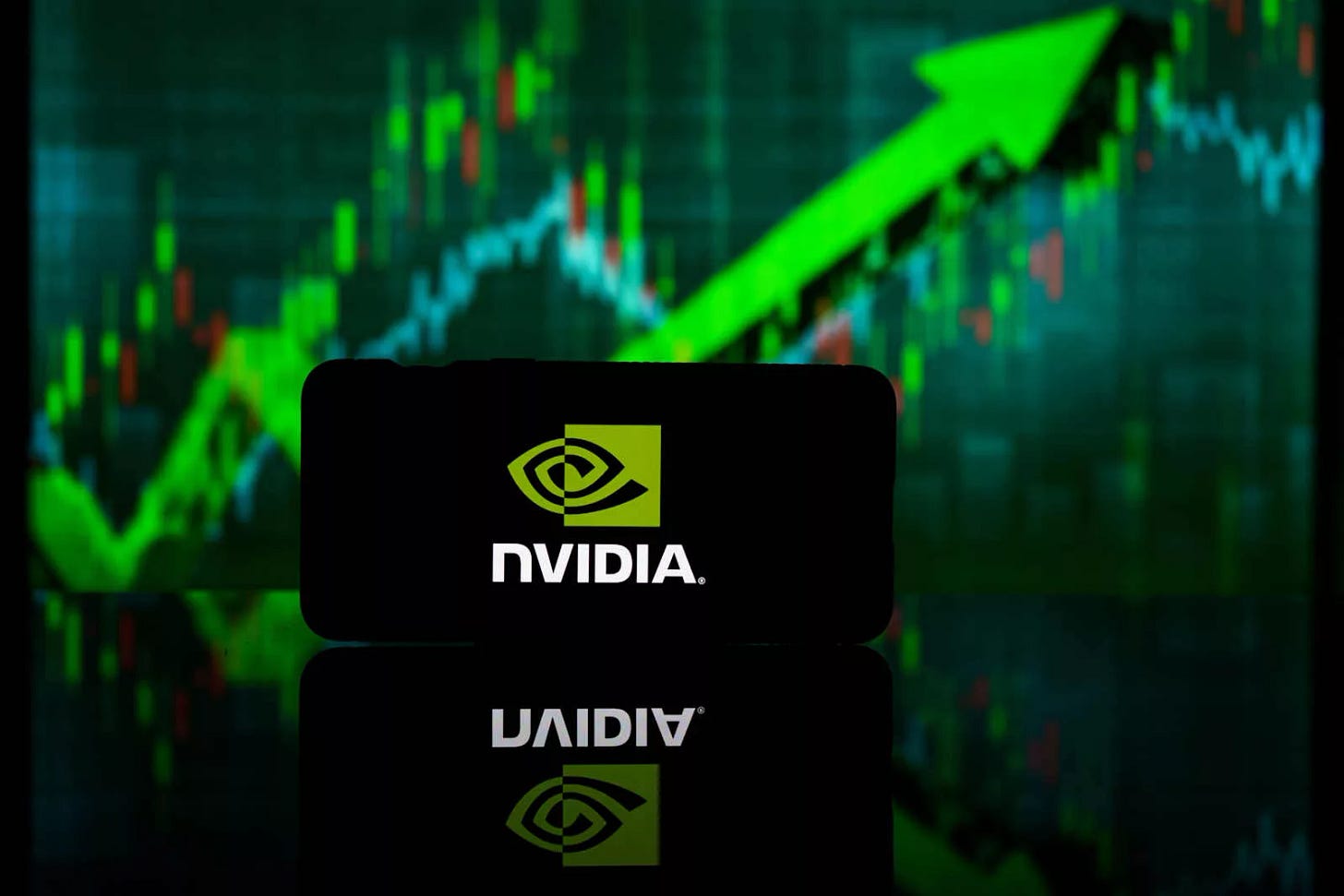Powering Forward: A Deep Dive into Nvidia's YTD Performance and Investment Considerations
3iMembers.com
Brought to you by
3i Members is a deal-sharing network that originated from a simple yet powerful realization — The best alternative investments are all in the same place. They are in the portfolios of the best alternative investors. Every month, 3i Members source over 100 deals from the network and select 3 to present. These deals are high-yielding, underwritable, and uncorrelated with asymmetric return profiles. Members come together to diligence these opportunities, negotiate terms, and decide whether to invest. Click here to see two sample deals from 3i Members.
Click here to learn more about the membership and join the waitlist.
Nvidia, the undisputed leader in graphics processing units (GPUs), has had a remarkable year so far in 2024. Fueled by strong demand across its core gaming, data center, and professional visualization segments, the company's stock price has skyrocketed, making it one of the best performers in the technology sector. This article delves into Nvidia's year-to-date (YTD) performance, analyzing the key drivers of its success, potential challenges, and the outlook for the rest of the year.
YTD Performance: A Breathtaking Climb
As of May 7, 2024, Nvidia's stock price has surged by an impressive 79.30% YTD. This dwarfs the performance of the broader market, with the S&P 500 gaining a modest 7.2% during the same period. Breaking it down further, some sources even report a YTD increase as high as 87.64%, highlighting the exceptional growth Nvidia has witnessed.
This impressive performance is further emphasized when compared to Nvidia's peers. While competitors like Advanced Micro Devices (AMD) have also seen positive returns (around 84.51% YTD), Nvidia has significantly outpaced them. This dominance extends beyond the immediate year. Looking at the trailing twelve months (TTM), Nvidia's total return, which includes stock price appreciation and reinvested dividends, stands at a staggering 219.46%.
Factors Fueling the Growth Engine
Several key factors have contributed to Nvidia's phenomenal YTD performance:
Surging Demand for Gaming GPUs: The global gaming industry continues to experience explosive growth, with gamers demanding ever-increasing graphics fidelity and performance. Nvidia's latest generation of GeForce RTX GPUs, particularly the high-end RTX 40 series, have been met with strong demand, despite facing supply chain constraints.
Data Center Boom: The ever-growing need for artificial intelligence (AI) and machine learning (ML) has fueled the data center market. Nvidia's powerful A100 and H100 Tensor Core GPUs are the go-to choice for these workloads, propelling significant growth in the data center segment.
Omniverse and Professional Visualization: Nvidia's Omniverse platform, a real-time 3D simulation and collaboration platform, is gaining traction in various industries like architecture, engineering, and media & entertainment. This, coupled with the continued demand for professional visualization solutions leveraging Nvidia's GPUs, is another growth driver.
Strong Financials: Nvidia's financial performance has been consistently strong, with the company reporting record revenue and earnings in recent quarters. This financial health instills confidence in investors, further contributing to the stock price appreciation.
Cryptocurrency Market Recovery: While not the primary driver, the recent resurgence in the cryptocurrency market has also played a role. Nvidia's GPUs are popular for cryptocurrency mining, and a rise in cryptocurrency prices often translates to increased demand for its products.
Potential Challenges on the Horizon
Despite the positive outlook, Nvidia faces some potential challenges that could impact its future performance:
Supply Chain Constraints: The ongoing global chip shortage continues to disrupt production and limit the availability of Nvidia's GPUs. This can lead to frustrated customers and potentially lost sales.
Macroeconomic Concerns: Rising inflation and interest rates could dampen consumer spending and hinder investments in data centers, potentially impacting Nvidia's core markets.
Competition: While Nvidia is the current leader, competitors like AMD are constantly innovating. Continued pressure from competition could erode Nvidia's market share in the long run.
Looking Forward: Maintaining the Momentum
Nvidia's future hinges on its ability to navigate these challenges and capitalize on emerging opportunities. Here are some key areas to watch:
Continued Innovation: Nvidia has a strong track record of developing cutting-edge GPU technologies. Continued investment in research and development will be crucial to maintain its technological edge.
Supply Chain Diversification: Mitigating the impact of supply chain disruptions by diversifying its manufacturing base and forging stronger partnerships with chip manufacturers will be essential.
Expanding into New Markets: Nvidia can explore new markets like the automotive industry, where its self-driving car platform, DRIVE, has significant potential.
Conclusion: A Year of Triumph, a Future Full of Promise
Nvidia's YTD performance has been nothing short of extraordinary. The company's strong fundamentals, coupled with the robust demand for its products, have positioned it for continued success. However, navigating the challenges in the global economic landscape and staying ahead of the competition will be critical for Nvidia to maintain its momentum in the long run. With its proven track record of innovation and a clear vision for the future






